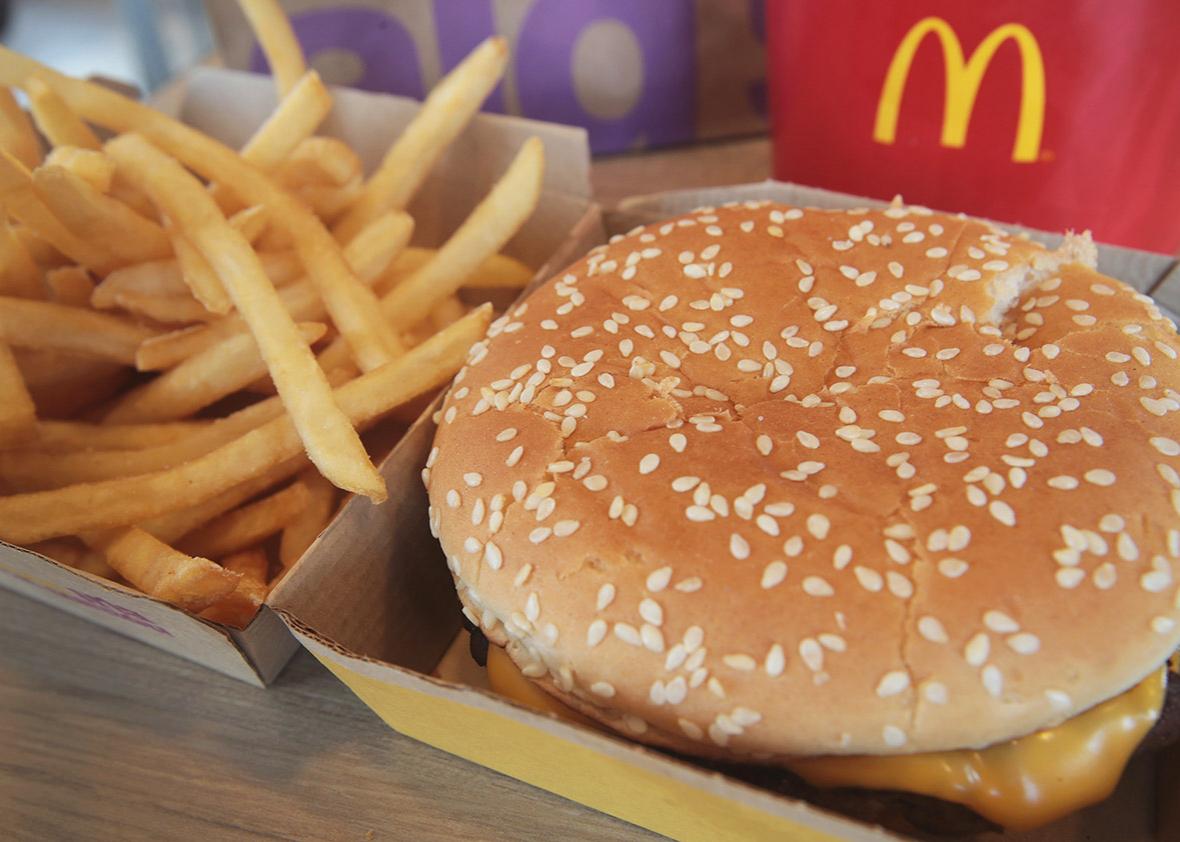In 2008, the city council of Los Angeles implemented a one-year ban on the construction of new standalone fast-food restaurants in South L.A. The goal was to reduce obesity in the low-income neighborhoods that make up that part of the city. Jan Perry, a city councilperson at the time of the ban, was quoted saying: “If people don’t have better choices or don’t have the time or knowledge or curiosity, they are going to take what’s there.” The ban was later extended.
It also hasn’t really worked. Since the policy was enacted seven years ago, obesity jumped from 63 percent to 75 percent in the South Central L.A neighborhoods it targeted. Perhaps that’s because, as the L.A Times reported in 2015, the number of fast-food restaurants actually increased by 17 in the seven years since the policy was put into place. (Standalone fast-food restaurants might have been banned, but fast-food restaurants in strip malls were not.) That’s certainly an argument against this specific policy, but it’s not quite a reason to think a more draconian ban would have been more successful at reducing obesity rates. That’s because the assumption at the core of this genre of policy—that low-income households consume more fast food than others and that this is the cause of their obesity—is contradicted by a wealth of data.
It’s true that residents of the lowest socioeconomic status neighborhoods tend to have higher exposure to fast-food restaurants than residents of the highest socioeconomic status neighborhoods. It’s for this reason that Jay Zagorsky, economist and research scientist at Ohio State University says we associate consumption of fast food with people earning low incomes. But it’s incorrect to think that lower income people are eating more fast food.
Zagorsky and Patricia K. Smith of the University of Michigan are the newest researchers to join a chorus of prior work disputing the correlation between fast-food consumption and socioeconomic status (SES). Their new study, which surveyed about 8,000 Americans in their 40s and 50s during 2008, 2010, and 2012, argues convincingly that low SES adults consume almost the same amount of fast food as high SES adults.
The authors split their 8,000 respondents into 10 equal groups by income percentile and, separately, wealth percentile. They then looked at the number of times respondents reported eating fast food over three weeklong periods. They found that the lowest SES populations and highest SES populations eat roughly the same amount of fast food. Specifically, when asked “Did you eat fast food in the last week?” only 5 percent more of the lowest earning SES adults in the survey ate fast food compared to the highest earning SES adults, not a significant difference. Additionally, when asked “How many times did you eat fast food in the last week?” the lowest SES adults consumed only 0.5 more fast-food meals (this fraction being burger equivalent of families conceiving 2.2 children) than the highest SES families. Overall, the groups’ consumption habits were comparable. The researchers did note that it was the middle-lower SES population that reported eating the most fast food, but in general, everyone was pretty similar.
So, if all income levels love a burger and fries, what factors actually influence our likelihood to indulge? According to Zagorsky, the more hours a person worked, the more likely they were to eat fast food. And, at least anecdotally, the most extreme examples confirmed that. The paper mentions that 17 survey respondents were able to match the consumption of Morgan Spurlock from Supersize Me, a burger for every meal of the week. In 2008, one of these frequent fast-food eaters worked two jobs, with one of the jobs being a truck driver. “This matches with the idea of a person who doesn’t have a lot of time.” Dr. Zagorsky said. It’s not the poor who eat fast food, it’s the time-crunched.
There’s another implication to be considered here. There’s a litany of evidence that low-income communities are disproportionately surrounded by fast-food restaurants, meaning that it is more readily available to them. But still—the two groups eat the same amount. This suggests that lower-income people might actually be more likely to turn down fast food, and perhaps it’s the wealthier people who seek it out.
